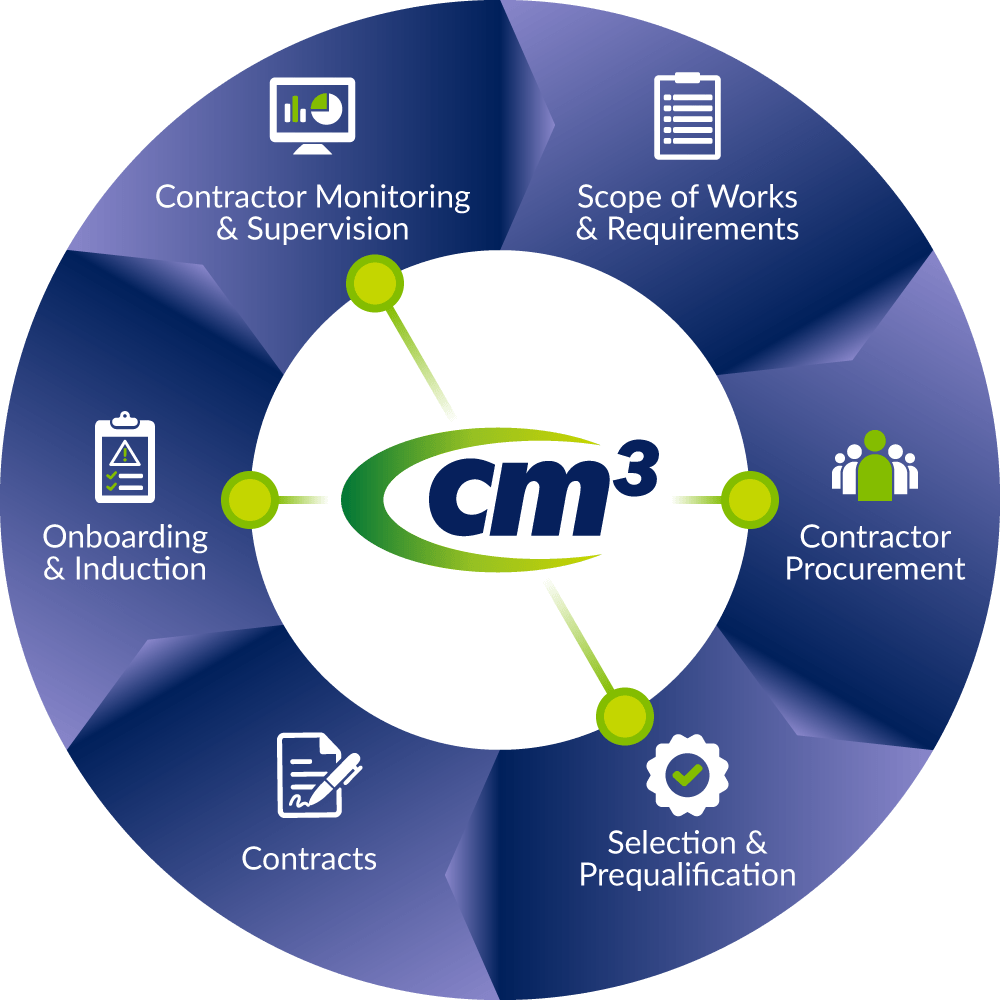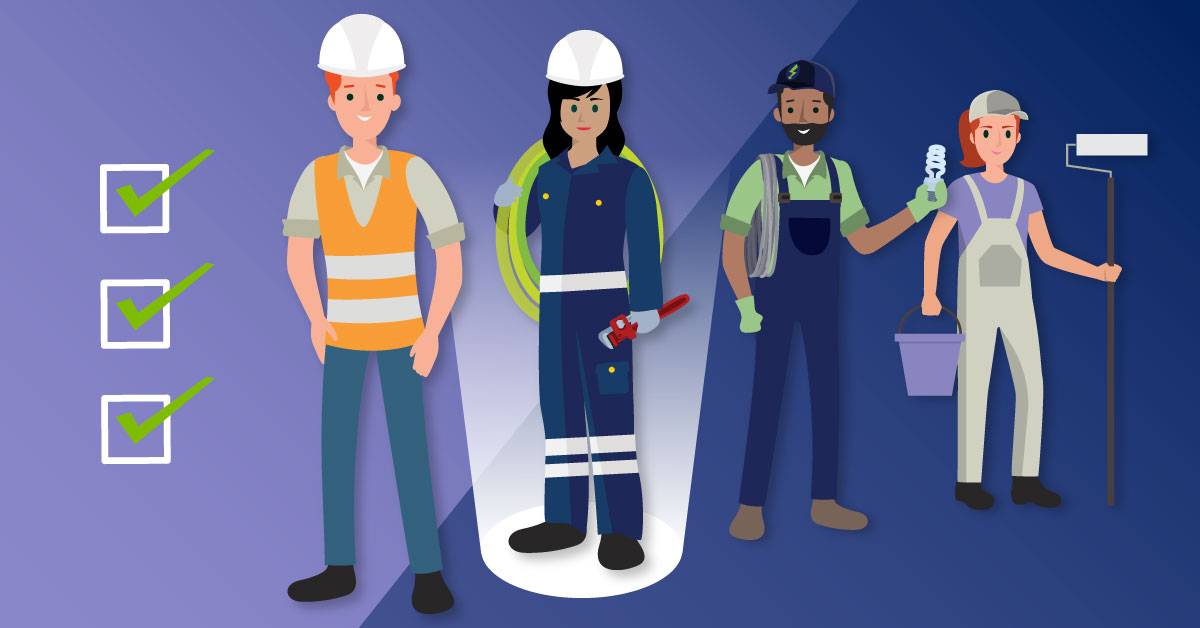Contractor Management is a process for ensuring an organisation, its contracted workers, and any subcontractors, meet their obligations efficiently and effectively whilst continually delivering on the objectives of the contract. But what is a contractor, what are these obligations, and how do you manage this relationship?
What is a Contractor?
A Contractor is an external provider that is engaged to conduct works or services to fulfil the business or operational requirements of a client. Contractors are engaged across virtually all industries for an extremely broad range of purposes, from simple works to highly sophisticated, ongoing undertakings.
A client may engage these businesses for many reasons, including:
- To source skills and expertise quickly
- To meet specialist requirements
- To perform complicated or high-risk activities
- For access to a larger workforce and equipment that would not be cost-effective to obtain in-house
- For quick project delivery
- For regular services they need, such as cleaning, maintenance and security
What are my obligations to my contractors?
Contractors are classified as ‘workers’ under the definition within the WHS Act and Regulations and can at times be deemed employees for the purposes of workers’ compensation. Consequently, the use of contractors does not remove your obligations as a Person Conducting a Business of Undertaking (PCBU) or employer to ensure there are systems in place to minimise the risk of these workers being hurt or injured.
If you engage contractors, a contractor safety management system should be part of your business processes. These systems can look very different depending on your businesses industry, nature, operations, and risks.
What are a contractor’s obligations?
Independent contractors differ from employees in their rights and obligations as they provide services to another person or business, as opposed to being employed by that person or business. Fundamentally, the obligations of a contractor are outlined in their contract, and include project deliverables, risk mitigation and controls, expectations around health and safety, adherence to relevant legislation, and maintaining relevant licences and insurances. Contracts can be simple or complex, explicit or implied. They may be as simple as a verbal agreement, a purchase order, or be formal and prescriptive documents setting out the responsibilities and deliverables for each party to the contract.
The Contractor Management Process
Managing contractors can be a complex and multifaceted undertaking. Because of this, it is important that you do your due diligence in order to achieve an optimal outcome. There are several stages in end-to-end Contractor Management that a mature framework will address.
Stage 1 – Scope of Works & Requirements
Before selecting a contractor to undertake works for you, you must have a well-defined outline of the work to be done, and what criteria are important. This will involve determining the scope of works and identifying the required experience, qualifications, safe systems of work, and insurances that a contractor will need to possess. By having this detailed from the beginning, it will simplify the process of selecting a contractor and mitigating risks.
Stage 2 – Contractor Procurement
Contractor procurement is the process of seeking to enlist the services of another business, often by tendering or seeking bids, and agreeing to the terms of engagement. Once you understand your work or project’s requirements, you are able to begin the procurement process and identify a shortlist of contractors to select from.
Stage 3 – Contractor Selection & Prequalification
Contractor Prequalification is the process of assessing a contractor prior to engagement and mobilisation to site that ensures that they meet, or exceed, your minimum requirements. This will include verification of licences, insurances, and safe work practices. Prequalification should also consider the hazards or risks they might find during the course of work, the hazards and risks they may bring that are associated with their work, and how these risks will be controlled. Once prequalified, you should have all the information you need to make an informed selection on engaging a contractor.
Cm3 has a team of expert assessors that go deep into checking how well your contractors are prepared for work by addressing important questions. Learn more in What is Contractor Prequalification?
Stage 4 – Contracts
A fundamental element of engaging a business or an individual person for services as a contractor is a robust contract that protects all parties. Ideally a contract is a written document and should include:
- The agreed scope of works
- The responsibilities and liabilities of each party
- Expectations of compliance to policies and regulations
- Expectations of timelines
- Consequences of breach of contract terms
- Responsibilities for errors, omissions, and corrections
Stage 5 – Onboarding & Induction
Once selected, it is important that a contractor is correctly onboarded to your company’s policies, as well as relevant site-specific requirements. The establishment of a comprehensive induction process, for completion by contractors, will ensure contracted workers have knowledge of their obligations, site-specific hazards or risks, and your expectations around health and safety.
Contractor onboarding and induction may also involve delivering training on subjects such as safety or modern slavery, or drug and alcohol testing. Contractor and visitor site access solutions can also provide the opportunity to monitor who is arriving at your workplace and deliver necessary site-specific inductions.
Stage 6 – Contractor Monitoring & Supervision
It is of particular importance to periodically verify that a contractor is delivering what was outlined in your agreement. This can involve:
- Ongoing verification of currency of insurances and licences
- Reviews of the contractor’s compliance to safety management systems, policies, and processes
- The implementation of periodic performance reviews to address poor performance and address non-conformances
- The tracking of non-conformances and delivery of corrective actions
- Ongoing communication and engagement with the contractor
- Preparation for offboarding
Learn more about Onsite Contractor Verification and how it provides cost-effective, fast and ongoing management of your contractors’ safety across your supply chain.

The Cm3 Contractor Management System
Cm3 is Australia’s leading Contractor Management solution, developed and supported by a dedicated team of qualified developers, assessors, account managers, and support specialists. Cm3 has an ecosystem of powerful solutions for meeting your contractor management requirements. These include a comprehensive contractor compliance management and prequalification system, the Cm3 OnSite site access app, and Ethical Sourcing and Modern Slavery data collection tools. Cm3’s architecture is also capable of robust integrations with clients’ existing site access, procurement, work order and accounting systems.
In addition to inviting your existing contractors to Cm3, you are able to leverage a database of contractors that have already completed WHS assessments based on Cm3’s standardised processes. The system keeps track of contractor licence and insurance expirations, lifting the burden of ongoing verification from your organisation, and dramatically decreases the time required to procure and onboard your contractors.
